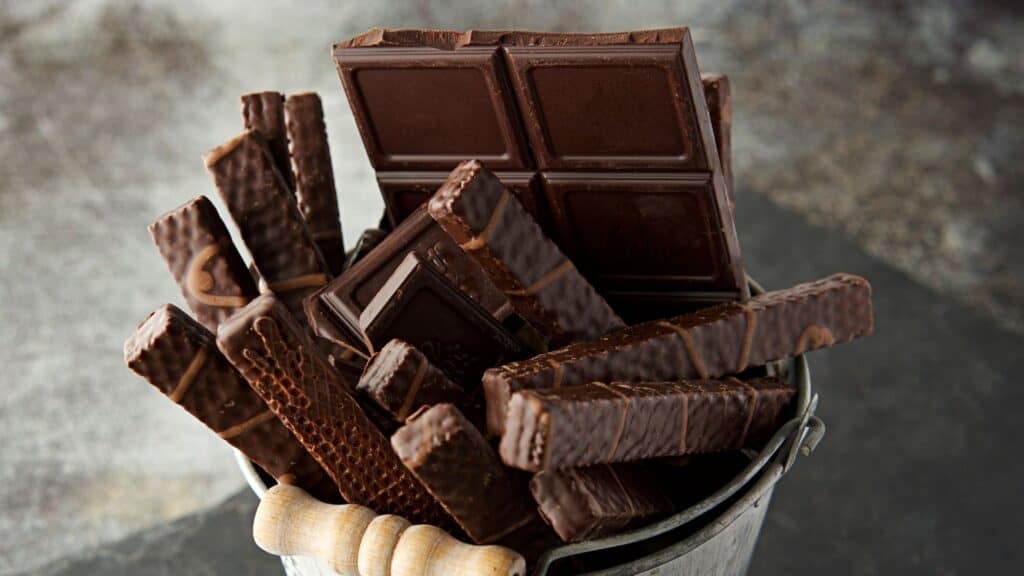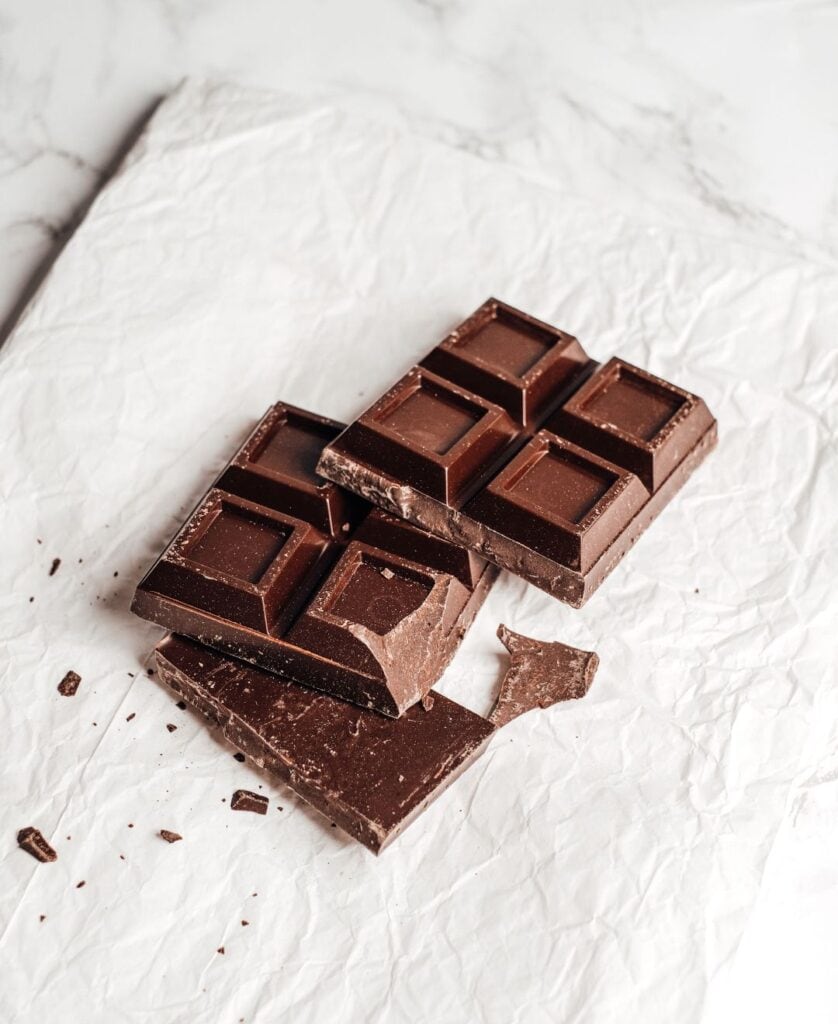Whether it’s the simple elegance of dark chocolate bars, ooey-gooey fudgy brownies, or a luxuriously smooth mocha latte, the rich, indulgent decadence of dark chocolate is second to none.
The market agrees.
According to Persistence Market Research, global sales of dark chocolate reached over USD 70 billion in 2024. With a projected CAGR of 7.2%, it is expected to hit over USD 131 billion by 2033, nearly doubling in less than a decade.
It’s easy to see that dark chocolate is on the rise, but what is it that is giving milk chocolate’s more bitter and astringent counterpart this growing reputation of sophistication and true indulgence?
“I think it really comes down to the amount of the cocoa,” says Angie Lantman, Manager – NA Applications at Edlong.

“Milk chocolate is going to be smoother and creamier with distinct dairy notes. It’s also going to have smoother melt-in-your-mouth texture and mouthfeel. Dark chocolate, on the other hand, has a higher percentage of cocoa solids, making it come across as a stronger, truer chocolate profile. This can help make it seem more decadent and luxurious for a lot of people.”
What elevates dark chocolate in shoppers’ minds even more is that this amazing taste can also come with equally amazing health benefits.
Functional Dark Chocolate Bars, Beverages, and More
Often lost in all of the discussion about functional foods and ingredients is the fact that your standard high-quality dark chocolate bars might already qualify.
The reported health and functional benefits of dark chocolate are one of the major drivers of its growth.

Not only is it rich in essential minerals like magnesium, phosphorus, zinc, iron, and copper, but it’s also rich in antioxidants called flavonoids, which are linked to improved heart health, better brain function, reduced inflammation, and much more.
Then, of course, there is the caffeine.
A 3.5-ounce serving of dark chocolate with 70%-85% cacao has 80 milligrams of caffeine!
For reference, an 8floz cup of coffee has about 95mg and a standard 12floz cup of soda clocks in at around 40-55mg of caffeine.
Still, developers are also looking for ways to pair the taste of dark chocolate with other functional ingredients for what might be an even bigger boost.
“Dark chocolate as an ingredient and as a profile is a great match for functional ingredients, especially adaptogenic and nootropic mushrooms. That’s because like coffee, the notes of the chocolate can compliment some of that earthy bitterness from the mushrooms, and actually pair really well together. The same goes for other functional ingredients with off-notes” explains Lantman.
She adds that this can go for dark chocolate bars, high-protein beverages, and so much more.
Lantman also emphasizes that this perfect pairing potential isn’t limited to functional ingredients but that we also see it helps to add a level of “premiumization” to products and flavor pairings.
Innovative and Premium Pairings for Dark Chocolate Bars and Beyond
It’s not news that just about anything is better with chocolate, but choosing to go with dark chocolate over milk or even white chocolate can provide a more “premium” perception of the product.

This view can also carry over to the flavor profiles one pair with dark chocolate.
“Classic combinations like caramel and raspberry pair really well with dark chocolate bars, as do nuts, making it a great complement for protein bars and snacks. But we are also seeing developers get creative with infusions like chilis, matcha, bacon, and more, and I think it’s that rich robust complexity you find in dark chocolate in particular that makes these work,” says Lantman.
She adds, “You can’t forget about the wide range of flavors that can be classified as sweet browns. This includes everything from your caram0els to toasted coconut, praline, dulce de leche, speculoos, and so on. Really understanding how and why these different profiles work together becomes even more important when you consider the current state of the cocoa commodities market.”
With dark chocolate needing more considerable amounts of cocoa than other types of chocolate, the recent volatility in cocoa prices can be a massive hurdle for developers looking to utilize its complex flavor profile.
This is where Lantman believes flavors can play a significant role in helping developers offer a premium taste experience without the premium production price tag.
“I think this is something that product developers and formulators are trying to figure out because cocoa is expensive, and you can’t just increase the prices of your products, especially in the current market. So how can flavor help that? At Edlong we’ve been putting a lot of effort into finding ways to use flavor to help companies cut back on cocoa and still achieve that same flavor profile. This could be from adding a dark chocolate flavor or fudgy flavor, or even a sweet brown flavor. That’s going to build back that same level of decadence while also lowering your costs.”

Pairing with flavors like sweet browns also provides the opportunity to quickly offer LTOs (limited-time offers) and indulgent line extensions that appeal to the same consumers looking for that premium dark chocolate experience that is second to none.
About the Author: Angela Lantman, Manager – NA Applications
I’ve worked in the flavor industry as a product developer and manager for almost 25 years. Balancing art and science to create great tasting foods and beverages has been my passion as a product developer. I’m lucky to continue working with customers while leading an awesome team of food scientists and chefs. Participating in the plant-based market evolution has been both challenging and rewarding. Me and Edlong are here to help find a great tasting solution to your next challenge.
Topics: Dairy flavorsSweet dairy flavors
Resource Type: Article
